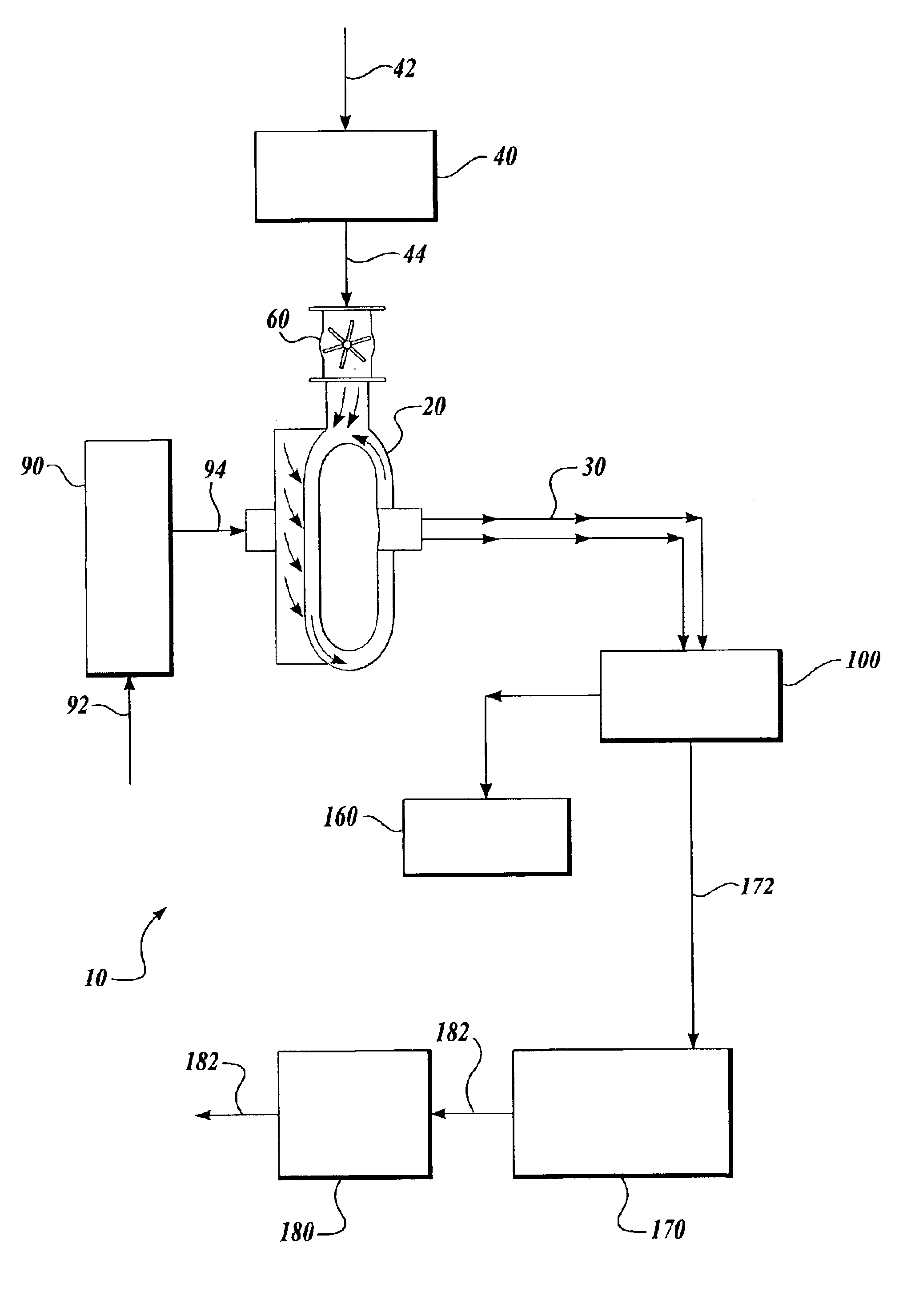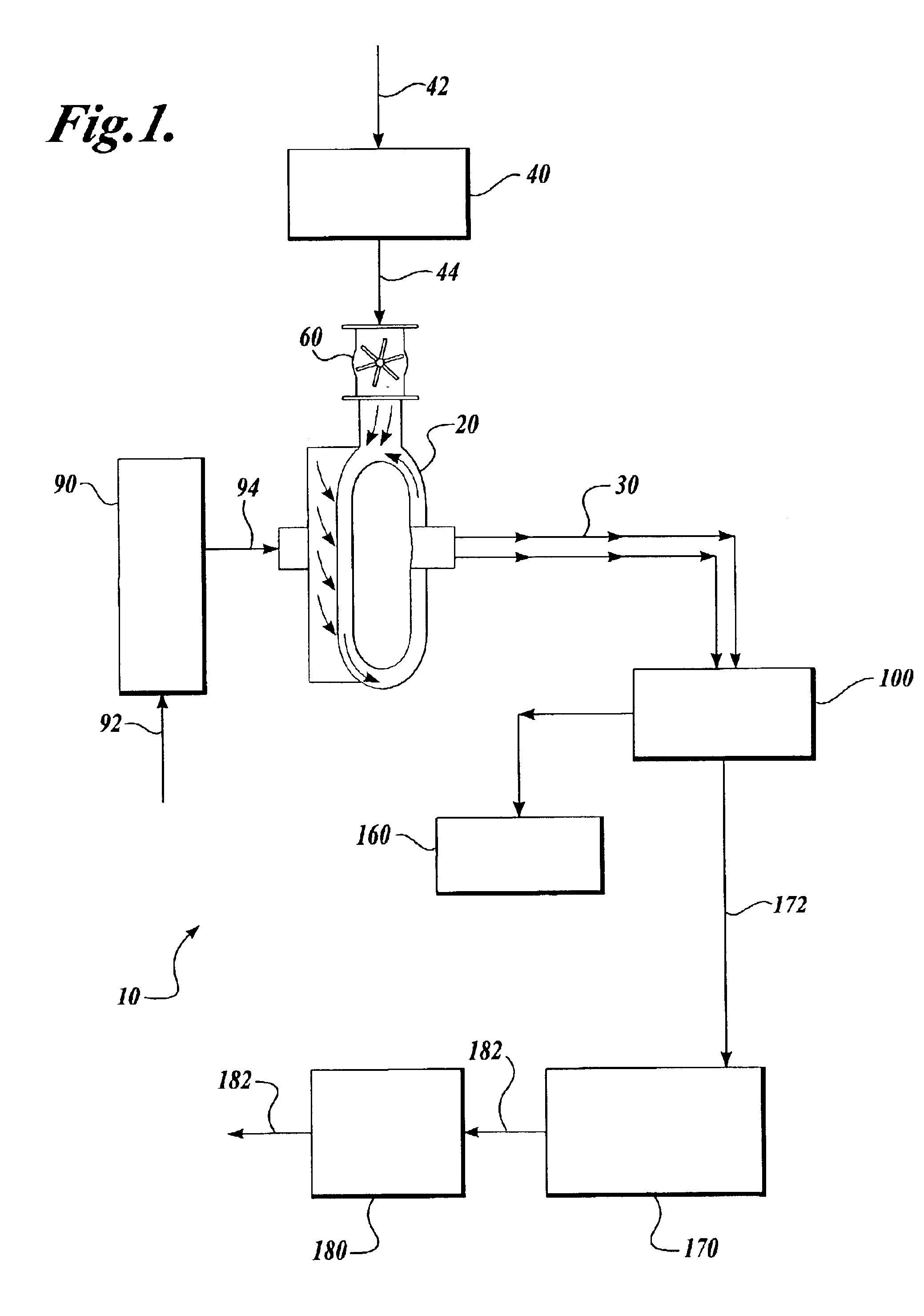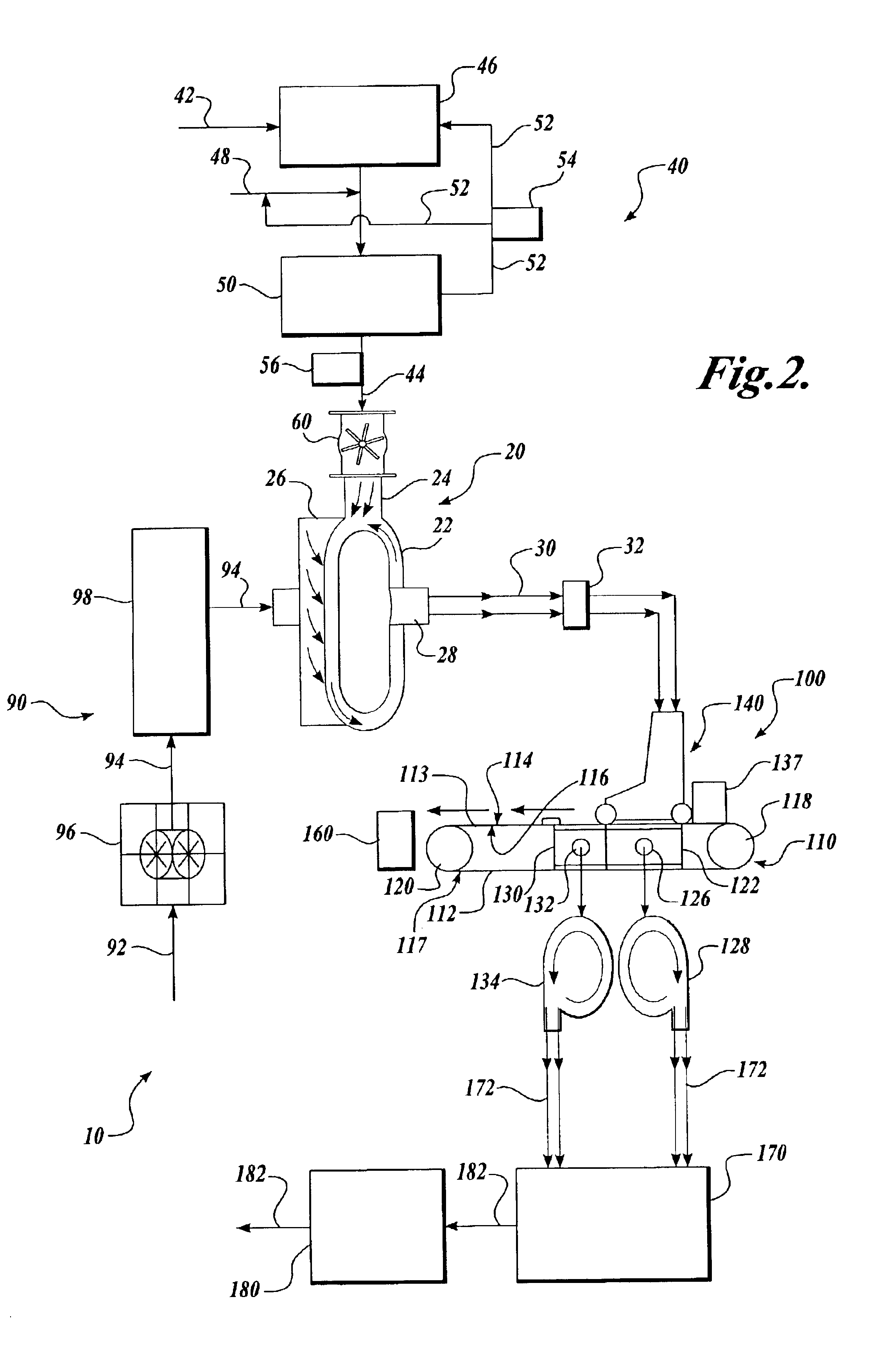System for producing dried singulated cellulose pulp fibers using a jet drier and injected steam
a technology of singulated cellulose and pulp fibers, which is applied in the direction of drying machines, filter paper, solid waste management, etc., can solve the problems of high capital expenditure of each piece of processing equipment, steps and pieces of processing equipment, and energy-consuming processes, and achieve low knot and fine content, stable outlet temperature, and great kink and curl. curl and twist
- Summary
- Abstract
- Description
- Claims
- Application Information
AI Technical Summary
Benefits of technology
Problems solved by technology
Method used
Image
Examples
example 1
[0095]Dried, singulated pulp was produced by re-wetting never dried pulp at approximately 5% solids made from sawdust (Kamloops TYEE) in a hydropulper to a consistency of approximately 3% solids. The re-wetted pulp was then transferred to a holding tank with recirculation to keep the pulp in suspension. The pulp was taken from the recirculation line with a Moyno (brand) positive displacement pump and feed to a TEMA (brand) continuous centrifuge with a discharge breaker ring at its output. The pulp used in Table 1 was used as is from the centrifuge output without any further de-lumping or pre-drier feed treatments. These pulp fibers had a length on the order of 1.2 mm. The pulp was unbleached and never dried. Runs were repeated at different feed rates and inlet and outlet temperatures as set forth in Table 1 below. Alternating runs with and without steam were conducted. Samples were collected after the jet dryer had stabilized with the steam injection. This normally took on the order...
example 2
[0096]Example 1 was repeated on unbleached Douglas fir fibers. These fibers had an average length on the order of 2.4 mm to 2.5 mm. This pulp was once dried. The pulp was acquired in bale form comprising a plurality of pulp sheets. The pulp sheets were re-wetted in a hydropulper to a solids consistency of approximately 5% for a period of time that when a sample of pulp was taken from the hydropulper and tested, it showed no visual fiber bundles in a slurry, and that the pulp fibers had fully dispersed as if they were never a drier sample. The re-wetted pulp was then transferred to a holding tank with recirculation to keep the pulp in suspension. The pulp was taken from the recirculation line with a Moyno (brand) positive displacement pump and feed to a TEMA (brand) continuous centrifuge with a discharge breaker ring at its output. The pulp was used as is from the centrifuge output without any further de-lumping or pre-drier feed treatments.
[0097]The results are set forth in Table 2 ...
example 3
[0098]Example 2 was repeated on pulp produced from Southern pine. This pulp had an average fiber length of 2.3 mm to 2.4 mm. The pulp was never dried. The results of several lines are set forth in Table 3 below.
FeedsteamrateInletOutletlineLineDe-g / minTempTempKnotsAcceptsFinesSteamorificeItemSpecialwateringBleachStatus(OD)Null° C.° C.%%%psimm357steamscrewpressbleachednever-dried−1.5150944.1378.617.27605.1345No steamscrewpressbleachednever-dried107−4150995.7377.8716.4358steamscrewpressbleachednever-dried148−1170985.7377.217.07605.1346No steamscrewpressbleachednever-dried148−31701086.677.8715.53359steamscrewpressbleachednever-dried49−12001501.8782.0716.07605.1347No steamscrewpressbleachednever-dried49−42001613.0781.0715.87360steamscrewpressbleachednever-dried104−12001294.7378.0717.2605.1348No steamscrewpressbleachednever-dried104−32001433.3381.2715.4361steamscrewpressbleachednever-dried165−1200104675.1318.87605.1349No steamscrewpressbleachednever-dried165−2200121777.8715.13362steamscre...
PUM
| Property | Measurement | Unit |
|---|---|---|
| pressure | aaaaa | aaaaa |
| nozzle size | aaaaa | aaaaa |
| nominal diameter | aaaaa | aaaaa |
Abstract
Description
Claims
Application Information
 Login to View More
Login to View More - R&D
- Intellectual Property
- Life Sciences
- Materials
- Tech Scout
- Unparalleled Data Quality
- Higher Quality Content
- 60% Fewer Hallucinations
Browse by: Latest US Patents, China's latest patents, Technical Efficacy Thesaurus, Application Domain, Technology Topic, Popular Technical Reports.
© 2025 PatSnap. All rights reserved.Legal|Privacy policy|Modern Slavery Act Transparency Statement|Sitemap|About US| Contact US: help@patsnap.com



